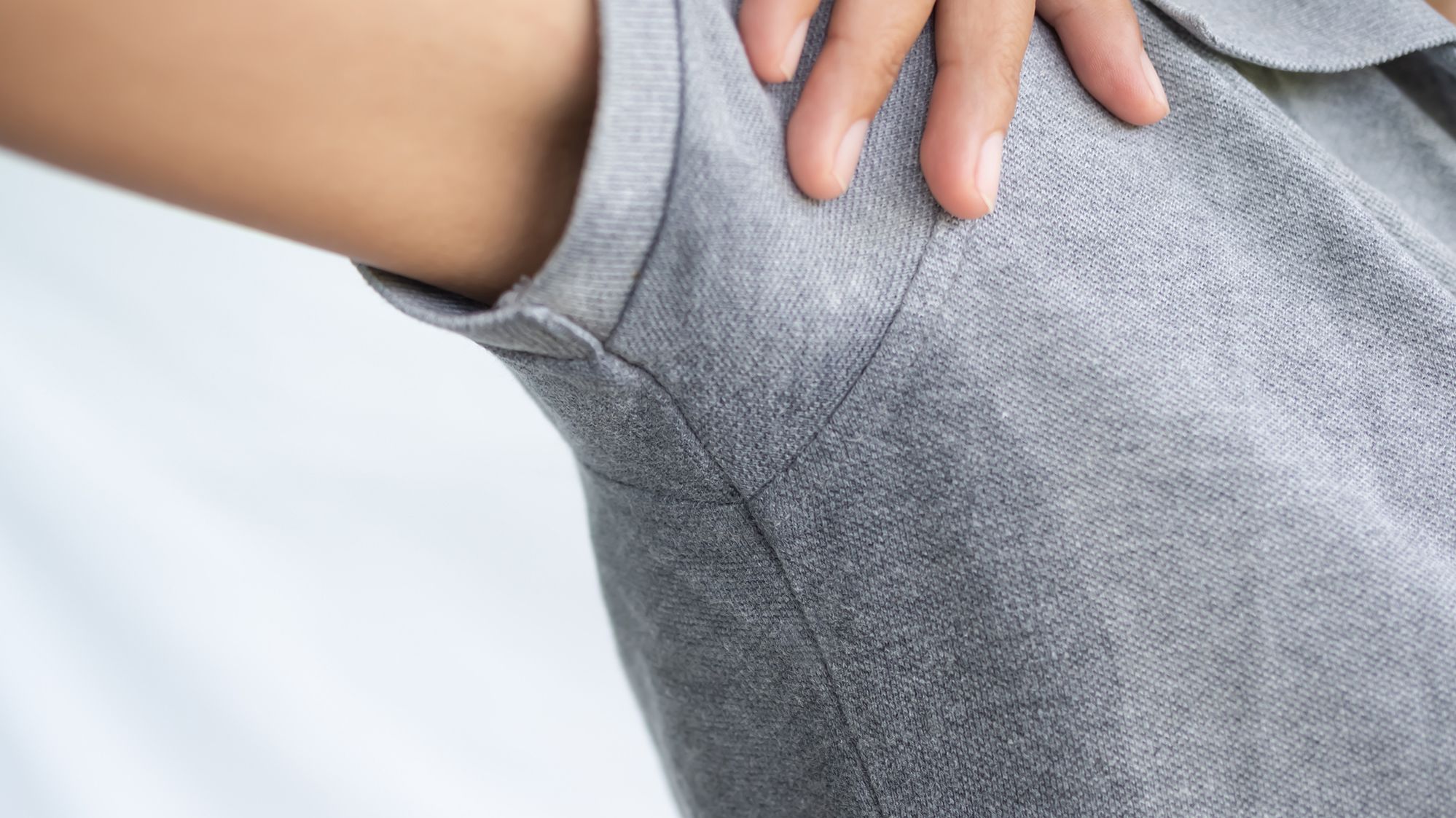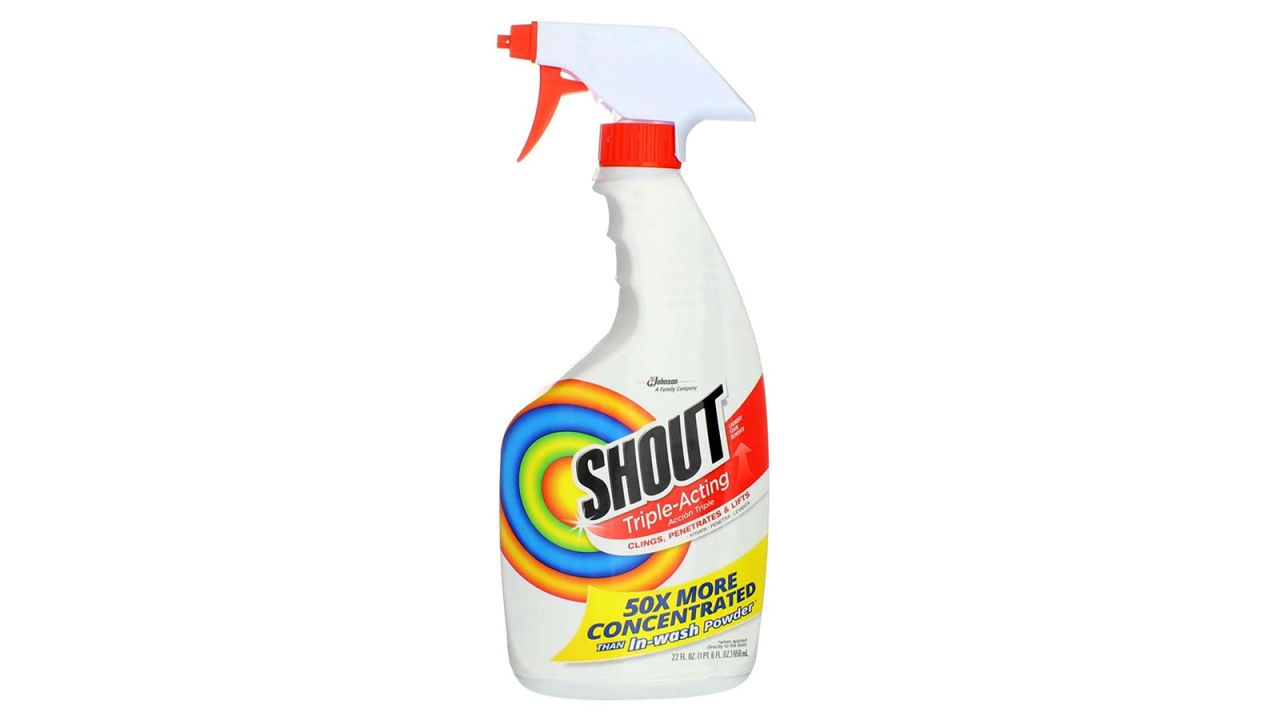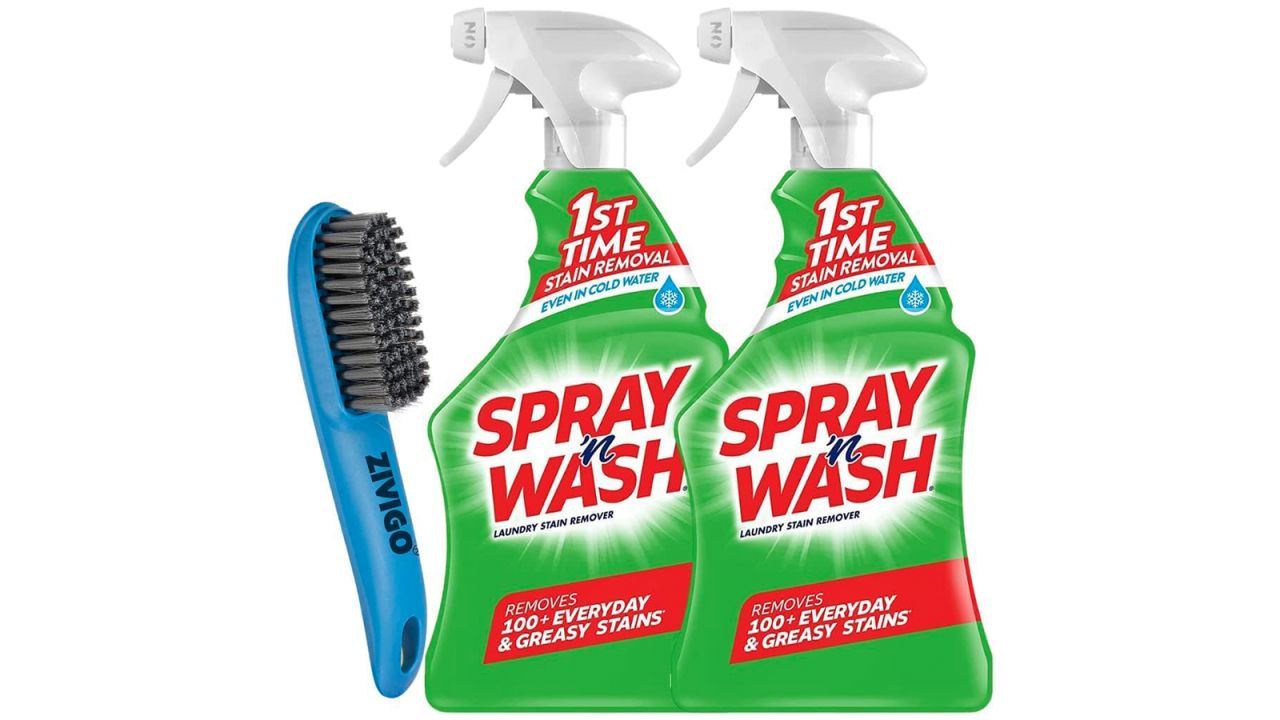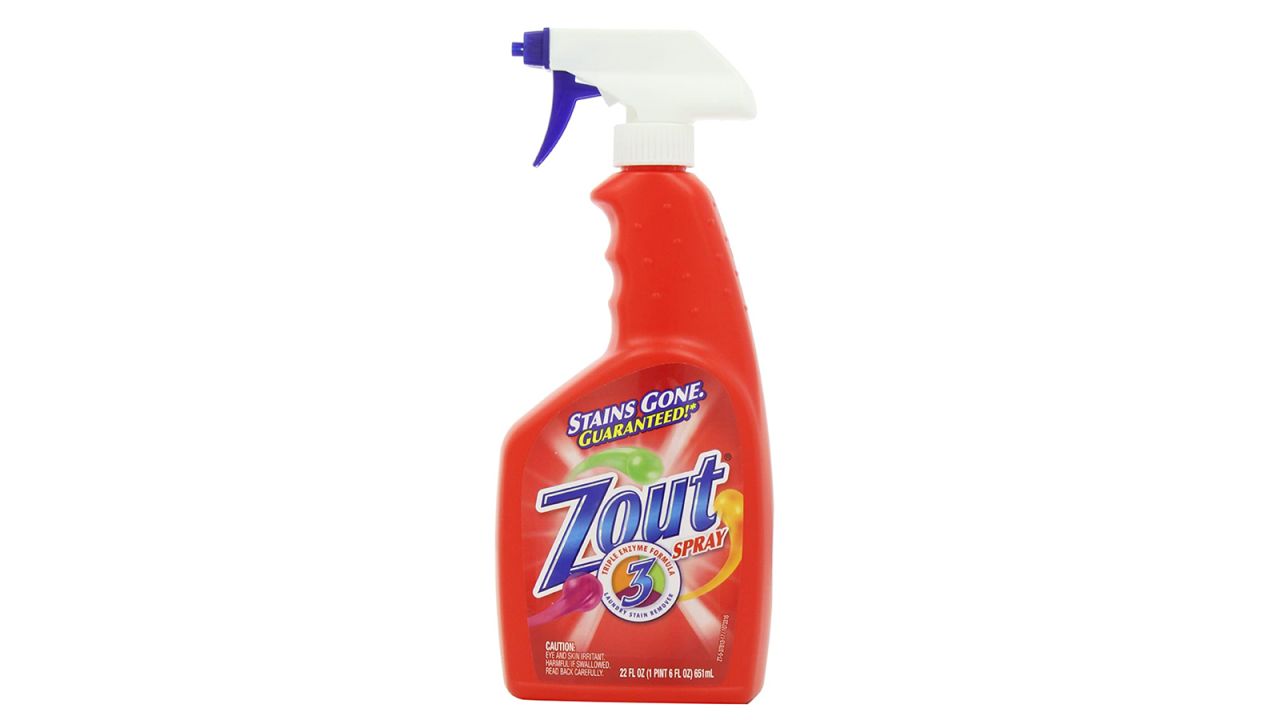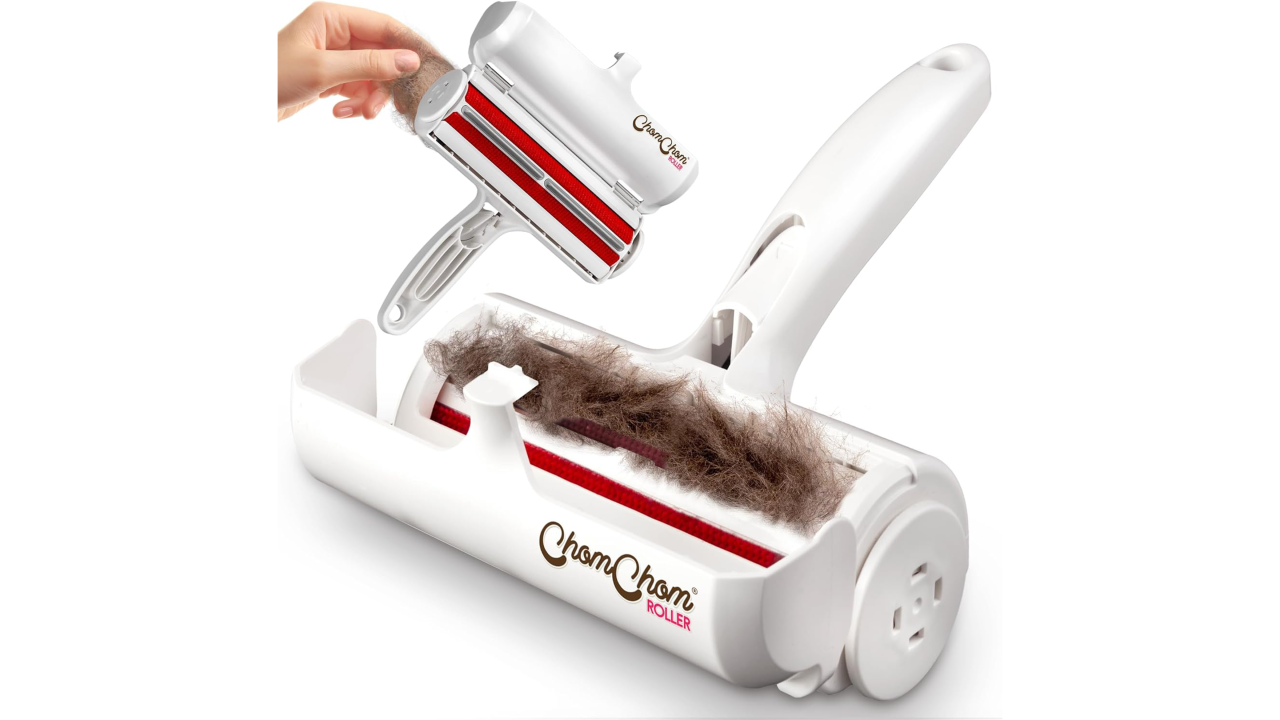Removing sweat stains from the underarms of shirts is one of the most difficult laundry challenges. Ugly yellow or dark underarm stains will ruin white or light-colored shirts, and stiffness caused by product buildup from antiperspirant and deodorant will affect shirts of all colors and materials.
The difficulty in removing sweat stains from shirts is due, in part, to the complicated science behind what causes those stains in the first place. But there is a way to win the war against sweat stains — and an inexpensive secret weapon is the surprising answer to this vexing problem.
What causes sweat stains? (It’s not actually sweat!)
What we refer to as sweat stains — dark or yellow stains and a stiff, waxy buildup on the underarms of shirts — are actually combination stains caused by sweat, which is a protein stain, and the ingredients found in antiperspirant and deodorant formulas.
“Deodorant and antiperspirants contain many varied ingredients, which can and will create staining when coupled with perspiration,” Wayne Edelman, a fabric care expert and the president of Meurice Garment Care, explains. “These ingredients read like a chemistry lesson and include aluminum-based elements as well as wax-based formulas and petrochemicals.”
Aluminum is the main culprit behind those ugly stains and the stiffness that can make the underarms of shirts feel like cardboard. But even the switch to an aluminum-free deodorant or antiperspirant won’t entirely solve the problem, since wax and petrochemical-based ingredients, as well as sweat itself, will still leave buildup on the underarms of shirts.
The secret weapon that eliminates sweat stains
If you suffer from deep staining on the underarms of your shirts, you’ve probably tried what feels like a thousand different stain removers and laundry detergents that promise they’re the miracle product that will save your shirts. The problem is that the secret to removing sweat stains isn’t a stain remover.?It’s a stain-removing tool!
“Perspiration stains by themselves usually are cleanable by first pretreating them with any commercial wide-spectrum general stain remover like Spray ’n Wash or Shout,” Edelman says. It’s the method of applying them that makes all the difference, and for that, you’ll want to get your hands on a laundry brush, also known as a “spotting brush.”
The reason using a laundry brush is so effective is that it introduces what’s known as “mechanical action” to the stain removal process, which is critical to the laundering process. To use a laundry brush, spray the affected area with a stain treatment product or dab liquid laundry detergent on the stain, then use the brush to gently scrub the area. “The brushing creates mechanical action, which moves the soap and detergent into the fibers,” Edelman explains.
How to treat fresh sweat stains
“First and foremost, sweat and perspiration stains should be treated as soon as possible,” Edelman says. Over time, untreated stains can permanently discolor garments, making them difficult, if not impossible, to remove.
Before attempting any type of stain removal, Edelman reminds us to take care — literally. “It is best to always check the care label before attempting to clean any garment at home,” he says. “Attempting to remove stains from non-washable items at home can result in color loss and damage.”
Step 1: Apply stain treatment
Apply a stain treatment product or liquid laundry detergent to the affected area.
Step 2: Brush the stain
Use a laundry brush to gently brush the area, which will create mechanical action that ensures the stain remover fully penetrates the fibers to break down the staining and buildup.
Step 3: Wash
After treating the stains, launder the shirt to complete the stain removal process. “Regular washing after pretreatment is essential to flush out the pretreatment,” Edelman says.
The best commercial stain removers for sweat
As Edelman points out, virtually any commercial stain pretreatment product will work on sweat stains, provided a laundry brush is used to provide that essential mechanical action. Of course, we have plenty of recommendations when it comes to specific stain removers for use on clothing, carpet and more, including these products that are especially good on protein stains like sweat and other body soils.
Shout is one of the best all-around stain pretreatment products available.
Edelman recommends Spray ’n Wash in addition to Shout. This bundle includes a laundry brush, making it a great buy for people who don’t already own this essential washday tool.
Zout Triple-Enzyme Formula is another excellent stain remover for body soils, including sweat, sebum and dead skin.
Stain remover formulas that are designed for sports, like Krud Kutter Sports Stain Removers, are also great for a variety of protein stains, including sweat.
A DIY sweat stain remover
If commercial stain removers don’t do the trick, or if you prefer to make your own stain remover with ingredients you have in the home, Edelman recommends making a vinegar-based tannin solution.
Edelman’s tannin-stain removing solution calls for mixing 1/2 teaspoon of liquid laundry detergent with 1/4 cup of distilled white vinegar and 1/4 cup of cool water.
“This solution should be applied just like you would a commercial stain remover on the relevant area,” Edelman says, “and light brushing is best. Again, launder immediately following treatment.”
What you need to treat set-in sweat stains
Hopefully, using the advanced stain removal methods explained in this article will prevent set-in sweat stains from happening in the first place, but if and when they do, there are products and techniques that will restore the look and feel of your shirts. Typically, these methods involve soaking the shirts for an extended period of time, usually from one hour up to overnight, and using a laundry brush to make the stain remover more effective.
One of the best ways to remove deeply set sweat stains from shirts is to soak them in a solution of oxygen bleach. “We recommend a solution of laundry detergent and a sodium-based bleach such as OxiClean,” Edelman says. One thing to note about the use of OxiClean and similar products is that they need to be activated with hot water to be effective. “Maintaining temperature during this process keeps the bleach active,” Edelman says. “Many new washing machines have heated soak cycles that are best for this process.”
There are also some stain removers that are designed specifically to break down the aluminum and petrochemicals that leave behind buildup that creates a stiff feeling in the underarms of shirts, like Carbona Stain Devils #9 for rust and perspiration.
This one was an accidental discovery: Downy Rinse & Refresh, when used as a soaking agent, eliminates waxy, stiff buildup and staining caused by set-in sweat and antiperspirants. To use it, presoak the shirts, using a laundry brush to help work the product into the stained fibers, and then launder as usual.
